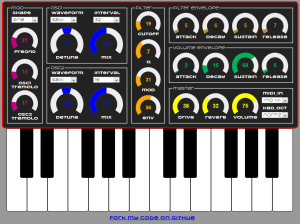Google today released the first beta version of Chrome 29 for desktop and Android. Most of the major changes in this update are happening on the Android platform, which now supports the Web Audio API for processing and synthesizing audio and WebRTC, the up-and-coming real-time communication API.
On the desktop (Windows, Mac and Linux), today’s update introduces a tweak to Chrome’s omnibox suggestions, which now take the recency of websites visited into account. The desktop version now also supports Google’s VP9 codec for WebM video playback.
 It’s worth noting that the Web Audio API will currently only work on ARM devices that support NEON optimizations, a way to execute certain instructions on ARM chips that was introduced in the ARM Cortex-A8 processor. To see the Web Audio API in action, take a look at this demo. It should work on the desktop, where Chrome has long supported at least some aspects of this API, as well as on iOS and the new Chrome for Android beta.
It’s worth noting that the Web Audio API will currently only work on ARM devices that support NEON optimizations, a way to execute certain instructions on ARM chips that was introduced in the ARM Cortex-A8 processor. To see the Web Audio API in action, take a look at this demo. It should work on the desktop, where Chrome has long supported at least some aspects of this API, as well as on iOS and the new Chrome for Android beta.
Firefox, it’s worth noting, only just implemented this API in its Nightly release channel last week.
 WebRTC, which allows for real-time communication using video and audio without the need for any plugins, is now available in the Android beta as well. Chrome for the desktop was one of the first browsers to support this protocol. The more browsers that implement it, of course, the more developers will be interested in this technology, and we are now getting to the point where WebRTC is gaining critical mass. Both Chrome and Firefox now support it, though Microsoft continues to hold out, with Internet Explorer 11 not yet supporting it.
WebRTC, which allows for real-time communication using video and audio without the need for any plugins, is now available in the Android beta as well. Chrome for the desktop was one of the first browsers to support this protocol. The more browsers that implement it, of course, the more developers will be interested in this technology, and we are now getting to the point where WebRTC is gaining critical mass. Both Chrome and Firefox now support it, though Microsoft continues to hold out, with Internet Explorer 11 not yet supporting it.
To give WebRTC a try, check out Google’s video chat demo here.
